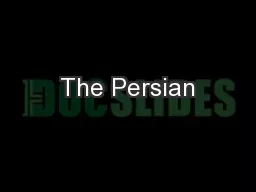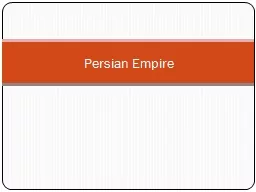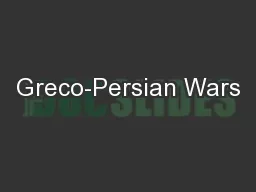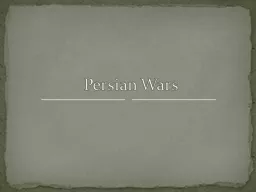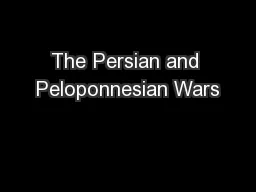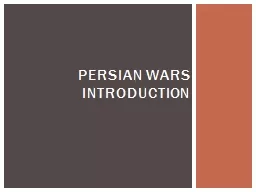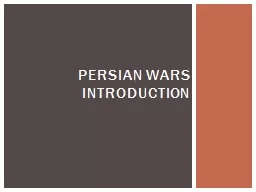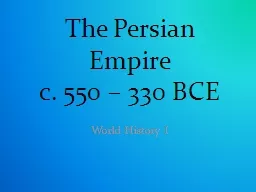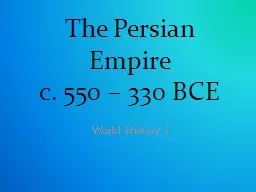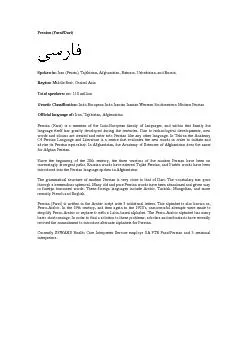PPT-The Persian
Author : aaron | Published Date : 2017-08-11
Emprie The Persians At about the same time that the Athenians were creating a democracy the Persian Empire was rising in the east Persians began as an unorganized
Presentation Embed Code
Download Presentation
Download Presentation The PPT/PDF document "The Persian" is the property of its rightful owner. Permission is granted to download and print the materials on this website for personal, non-commercial use only, and to display it on your personal computer provided you do not modify the materials and that you retain all copyright notices contained in the materials. By downloading content from our website, you accept the terms of this agreement.
The Persian: Transcript
Download Rules Of Document
"The Persian"The content belongs to its owner. You may download and print it for personal use, without modification, and keep all copyright notices. By downloading, you agree to these terms.
Related Documents

